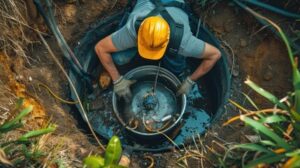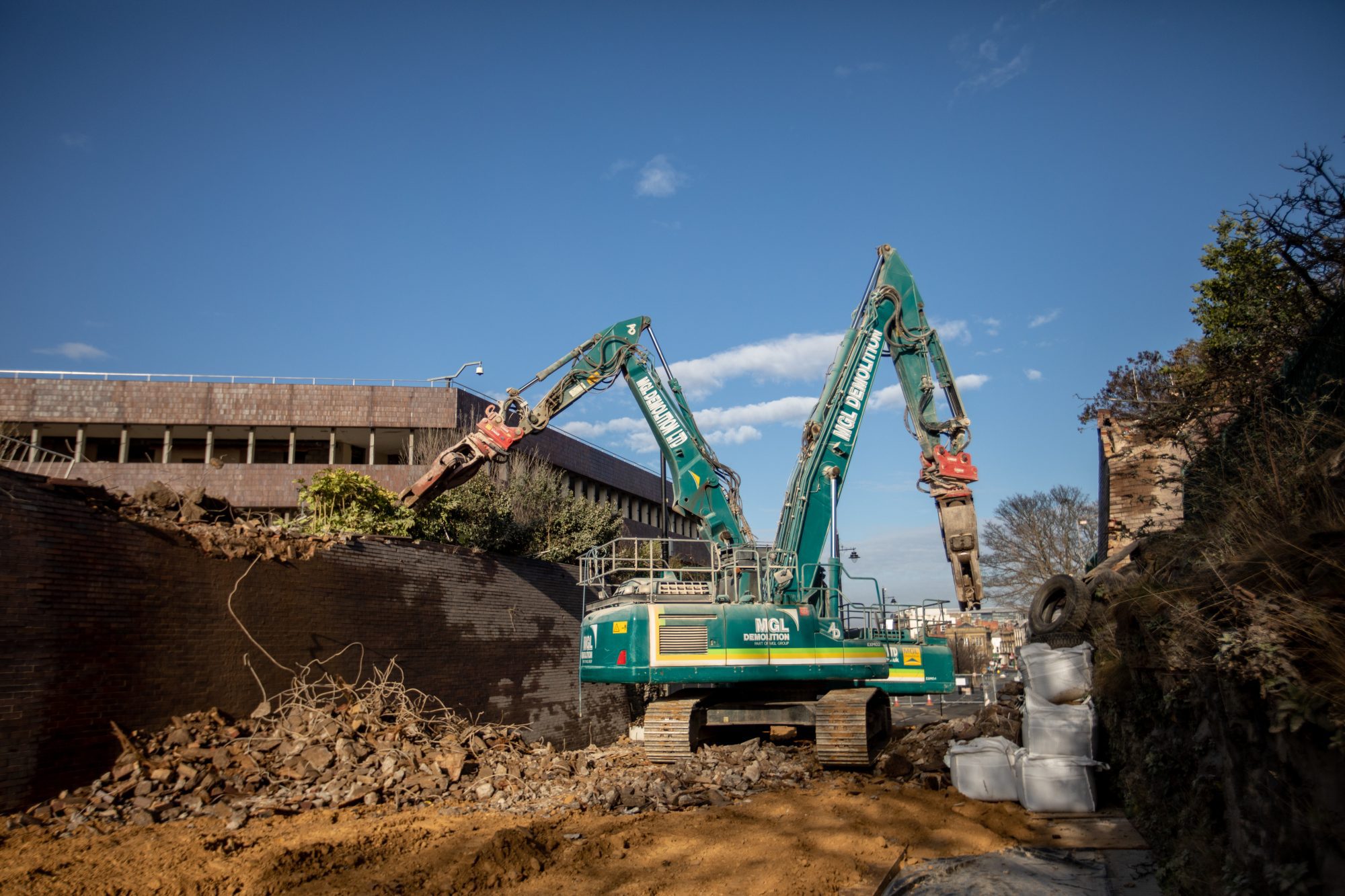A septic tank can be either underground or above ground. Its job is to hold wastewater and allow solid materials to settle, allowing scum (fats, oils, and grease) to separate.

The resulting layer of water, called effluent, goes into your drain field or leach field. A properly functioning septic system cuts pollution and helps local plants and wildlife. Visit https://www.septictankarmadale.com.au/ to learn more.
Wastewater from your toilets (called blackwater) and your shower, bathtub, sinks, washing machine, dishwasher, and clothes washer (called greywater) runs through a main drainage pipe to your septic tank. The wastewater enters the tank where it undergoes a settling process. Heavy materials sink to the bottom of the tank forming sludge. Fats, oils and grease float to the top of the water forming scum. Anaerobic bacteria in the septic tank feed on these organic wastewater pollutants and convert them to gasses. These gasses are then vented to the outside air.
Over time the sludge and scum layers in your septic tank gradually reduce in volume as anaerobic decomposition takes place. The septic tank must be emptied periodically to prevent non-clarified wastewater from exiting the septic system into your drain field or soil leach area. EnviroZyme’s Septic Tank Treatment products are an excellent way to keep your septic tank functioning properly and minimizing the need for pumping.
The wastewater in your septic tank flows through an outlet, which has a baffle to prevent sludge and scum from entering the drain field or leach area. This filtered wastewater, called effluent, then seeps into the drain field through perforated pipes into a gravel-lined absorption area, also known as a leach field or a soil-filtering system. This area of uncovered soil filters the effluent through rocks, sand, and other material, naturally removing pathogenic organisms and reducing nutrients that can cause algae blooms in nearby drinking water sources and other aquatic bodies.
Untreated wastewater from failing septic systems and poorly maintained systems can contaminate groundwater, surface water and drinking water wells. It can also cause health problems for humans, pets and livestock and cause a decrease in the availability of oxygen in waterways and lakes. Excess nitrogen and phosphorus can cause toxic algae to grow, which consumes oxygen and kills fish and other organisms.
It is important that a proper amount of soil cover the septic tank, pipes and drain field. The ground around your septic tank should be covered by 8 to 12 inches of mulch or organic material, to avoid compaction and to protect the soil.
Sludge
In a well-maintained septic system the bacterial decomposition processes liquify both the scum and sludge layers. As these organic solids are digested by anaerobic bacteria they give off gases such as carbon dioxide and methane. These soluble compounds and the organic materials are carried away in the wastewater. The resulting liquid effluent is then discharged into the drainfield.
Over time the sludge layer in your septic tank will build up, but this is normal as a septic tank is not designed to hold all the waste that enters it. Aerobic bacteria can only decompose so much, so the heavier solid waste particles sink to the bottom of your septic tank and form sludge. These particles are heavier than water and include things like human waste, toilet paper, cigarette butts, cotton buds/swabs, menstrual hygiene products and condoms. These are the items that cause septic tanks to fill up quickly and can clog your absorption field.
The scum layer on top is formed by oils and grease that are lighter than water. These substances float in the septic tank and can be a source of unpleasant odors. Keeping your kitchen and bathroom oil and grease free will help reduce this layer and prevent it from building up in your septic tank.
As wastewater flows through your septic tank, the inlet and outlet tees extend into both the scum and sludge layer of the tank. This causes hydraulic pressure to be exerted on the scum and sludge in order to push wastewater into the outlet pipe. However, if your septic tank is not pumped out frequently enough the solids will flow out of the septic tank with the wastewater and clog the drainfield and contaminate soil and groundwater sources.
The septic tank must be pumped out when the sludge and scum layers in the tank reach 30% or more of the working volume. This is to ensure that the septic system can provide sufficient time for the separated solids and wastewater to be thoroughly processed by the septic tank and dispersed into the absorption field.
Scum
Septic tank scum is a layer of materials floating above the wastewater inside the septic system. This layer is primarily comprised of fats, oils and grease that have been flushed down the drains. Because these substances are lighter than water, they float on the surface of the liquid waste. Helpful bacteria in the septic tank work to break down some of these floating solid wastes and convert them into liquid wastewater. This liquid waste then exits the septic tank through a T-shaped outlet into the septic drainfield area.
While it is normal for a septic tank to have some scum, it’s important that this layer not become too thick. Too much scum will reduce the amount of time that water is held back in the tank to allow proper settling. This can cause non-clarified sewage to flow out of the tank and into the drainfield where it can do serious and costly damage.
The ideal septic tank has as little sludge and scum as possible. The goal is to have a tank that has no more than 30% of its volume made up of these inorganic materials. This will allow for enough settling time for heavy solids to sink to the bottom of the tank and become sludge, and it will give aerobic bacteria a better chance to digest the remaining waste in the wastewater layer.
Whenever there is too much sludge or scum accumulation, it is a sign that the septic tank needs to be pumped. This will prevent the septic tank from being able to properly function and it can lead to waste leakage into the drainfield, which causes expensive problems for home and business owners.
It’s important to have a professional technician inspect your septic tank regularly, especially if it’s been several years since its last pumping. A technician can check sludge and scum levels and determine whether or not the tank needs to be pumped out. It’s also a good idea to have your septic tank inspected any time you notice unusual odors coming from your drains. These odors may be an indication that the tank is leaking into your home or business, or that the microbial community is not as healthy as it should be.
Effluent
When wastewater passes through your plumbing, it is contaminated with bacteria and other harmful microorganisms. It also contains solid waste particles, which separate and settle in the septic tank due to their different densities. Heavy solids, such as soil, grit, bones, and unconsumed food, sink to the bottom and form a layer of sludge. Oils and grease float on top, forming a layer of scum. Bacteria break down and decompose some of these waste materials in the septic tank. The clarified liquid in between, known as effluent, exits through the tank outlet into the absorption field or drainfield.
A septic tank is a buried, water-tight container made of concrete or fiberglass. It holds the sewage long enough for solids to settle and float, providing effective pretreatment before it is released into the environment. The septic tank also prevents odor-causing gases from being released into the atmosphere.
During this time, a healthy population of anaerobic bacteria breaks down organic waste in the tank, allowing for the water to become partially treated before being discharged. The septic tank is sized according to the number of household toilets and sinks.
The septic tank is a key part of your home’s sewage system, and it needs to be maintained properly in order for the system to work correctly. To keep your septic tank working properly, it is important to avoid flushing non-biodegradable items down the toilet such as cigarette butts, cotton buds/swabs, or menstrual hygiene products.
After the septic tank is full, it is pumped out by a licensed septic tank pumping company and sent to an absorption field, which is often called a drain field or leach field. The wastewater from the house flows into the absorption field, which is a shallow area of uncovered soil that filters the sewage through gravel and soil, as well as chemical reactions and natural decomposition by soil microorganisms. This process allows the sewage to enter the groundwater supply without contaminating surface water and causing disease in people and animals.

